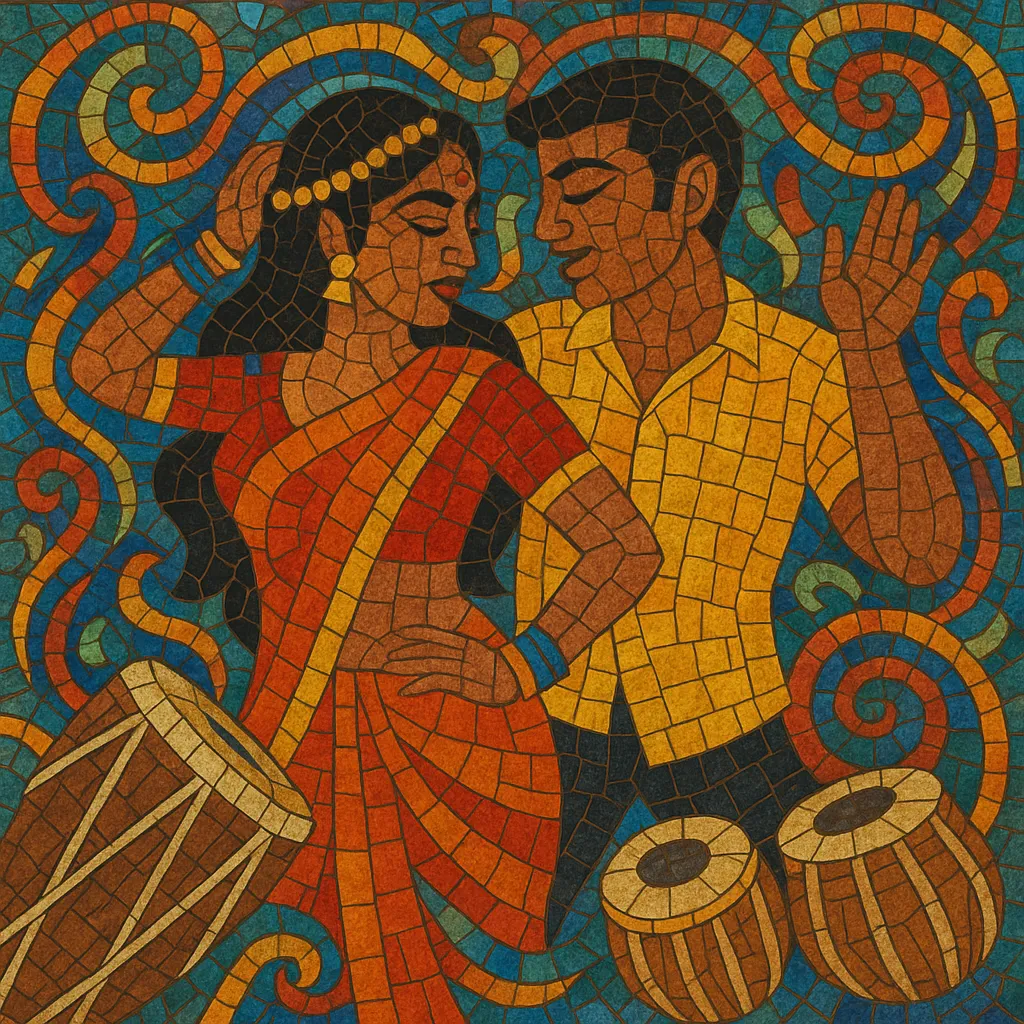Bhojpuri pop is contemporary popular music performed in the Bhojpuri language, emerging from the Bhojpuri-speaking belt of northern India. It blends regional folk melodies and dance rhythms with glossy Indian pop and filmi songwriting, then packages them in modern, electronic, club-ready production.
Typical tracks feature big, repetitive hooks, call-and-response vocals, and high-energy percussion suited to weddings, festivals (especially Holi and Chhath), and stage shows. Lyrics range from flirtatious romance and playful teasing to festive devotion and local pride, with a punchy, crowd-rousing delivery that favors immediacy and singability.
Sonically, the style sits between folk and dance-pop: dholak and tabla “thekas” (often kaharwa or dadra) lock with synthesized bass, bright leads, and punchy four-on-the-floor or broken-beat patterns. Auto‑tuned vocals, brisk tempos, and earworm choruses define its modern sound.
Bhojpuri-language songs have existed for centuries in folk forms, but the path toward Bhojpuri pop began as Bhojpuri film music developed in the 1960s–1980s. Film songs popularized melodic structures and performance styles that later fed directly into non-film recordings. By the 1980s, a growing cassette culture across Bihar and eastern Uttar Pradesh enabled low-cost recording and mass distribution, allowing local singers to reach village fairs, weddings, and transport hubs.
With inexpensive studios and regional labels, artists recorded lively, hook-driven songs that kept folk contours but adopted pop-length formats and brighter, amplified timbres. Cassettes circulated through informal markets, buses, and tea stalls, making Bhojpuri-language pop ubiquitous in everyday soundscapes. The music emphasized sing-along choruses, percussion rooted in kaharwa/dadra cycles, and lyrics resonating with rural life, migration, and celebration.
The 2000s saw a revival of Bhojpuri cinema and the rise of singer-actors who bridged film and pop releases. Production values improved while arrangements blended harmonium and dholak with drum machines and synths. Stage shows and televised performances amplified the genre’s visibility, and the “item-song” aesthetic—big beats, bold hooks—shaped audience expectations for standalone pop singles.
YouTube, short-video platforms, and streaming transformed Bhojpuri pop’s economy. Viral hits, DJ remixes, and high-tempo dance tracks spread beyond regional boundaries, propelled by flashy videos and portable PA culture. The sound tilted more toward EDM/house textures, heavier bass, and prominent Auto‑Tune. While debates over suggestive lyrics arose, parallel currents emphasized devotional/festive songs (Holi, Chhath) and romantic pop, leading to greater stylistic range and stronger female representation.
Today, Bhojpuri pop is a robust, hybrid mainstream within India’s regional music ecosystem. It continues to iterate on folk-rooted melodies with club-oriented production, sustained by live stage circuits, festival seasons, and a constant flow of singles optimized for digital virality.


